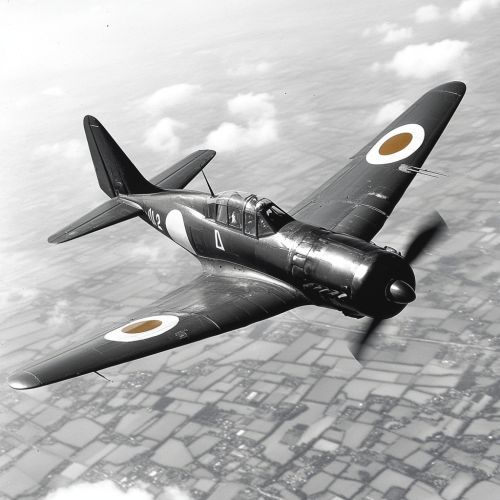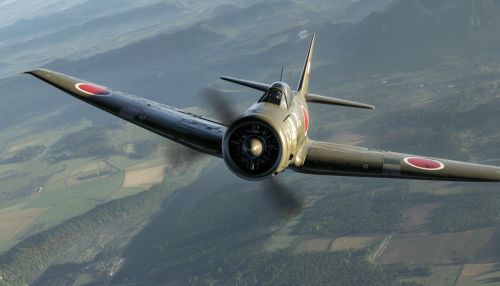Mitsubishi A6M Zero: Difference between revisions
(Created page with "== Introduction == The Mitsubishi A6M Zero, often referred to simply as the "Zero," was a long-range fighter aircraft operated by the Imperial Japanese Navy (IJN) from 1940 to 1945. Known for its exceptional maneuverability and range, the Zero was a formidable adversary during the early years of the Pacific War. It became emblematic of Japanese air power and was involved in many significant battles, including the attack on Pearl Harbor and the Battle of Midway...") |
No edit summary |
||
| Line 3: | Line 3: | ||
The Mitsubishi A6M Zero, often referred to simply as the "Zero," was a long-range fighter aircraft operated by the Imperial Japanese Navy (IJN) from 1940 to 1945. Known for its exceptional maneuverability and range, the Zero was a formidable adversary during the early years of the [[Pacific War]]. It became emblematic of Japanese air power and was involved in many significant battles, including the attack on [[Pearl Harbor]] and the Battle of [[Midway]]. | The Mitsubishi A6M Zero, often referred to simply as the "Zero," was a long-range fighter aircraft operated by the Imperial Japanese Navy (IJN) from 1940 to 1945. Known for its exceptional maneuverability and range, the Zero was a formidable adversary during the early years of the [[Pacific War]]. It became emblematic of Japanese air power and was involved in many significant battles, including the attack on [[Pearl Harbor]] and the Battle of [[Midway]]. | ||
[[Image:Detail-99891.jpg|thumb|center|A Mitsubishi A6M Zero in flight, showcasing its sleek design and distinctive markings.|class=only_on_mobile]] | |||
[[Image:Detail-99892.jpg|thumb|center|A Mitsubishi A6M Zero in flight, showcasing its sleek design and distinctive markings.|class=only_on_desktop]] | |||
== Development and Design == | == Development and Design == | ||
Latest revision as of 22:21, 2 November 2024
Introduction
The Mitsubishi A6M Zero, often referred to simply as the "Zero," was a long-range fighter aircraft operated by the Imperial Japanese Navy (IJN) from 1940 to 1945. Known for its exceptional maneuverability and range, the Zero was a formidable adversary during the early years of the Pacific War. It became emblematic of Japanese air power and was involved in many significant battles, including the attack on Pearl Harbor and the Battle of Midway.


Development and Design
Origins
The development of the A6M Zero began in 1937 when the Imperial Japanese Navy sought a new carrier-based fighter to replace the aging Mitsubishi A5M. The IJN's specifications demanded a highly maneuverable aircraft with a top speed of 370 mph, a climb rate of 3,000 meters in under 3.5 minutes, and a range of 1,000 nautical miles. Mitsubishi, under the leadership of chief designer Jiro Horikoshi, undertook the project, resulting in the prototype's first flight in April 1939.
Design Features
The A6M Zero's design was revolutionary for its time. It featured an all-metal construction with a low-wing monoplane design, retractable landing gear, and an enclosed cockpit. The aircraft was powered by a Nakajima Sakae radial engine, which provided a balance of power and efficiency. The Zero's lightweight construction, achieved through the use of advanced aluminum alloys, contributed to its exceptional range and agility. However, this also resulted in minimal armor protection for the pilot and fuel tanks, a vulnerability that would later be exploited by Allied forces.
The armament of the Zero included two 7.7 mm Type 97 machine guns mounted in the engine cowling and two 20 mm Type 99 cannons in the wings. This combination allowed for effective engagement with both enemy fighters and bombers.
Operational History
Early Successes
The A6M Zero saw its first combat action in the Second Sino-Japanese War, where it quickly demonstrated its superiority over Chinese aircraft. Its performance during these early engagements solidified its reputation and led to its deployment in the Pacific Theater.
During the attack on Pearl Harbor on December 7, 1941, the Zero played a crucial role, providing air cover for the Japanese fleet and engaging American aircraft. Its success in this operation underscored its capabilities and marked the beginning of its dominance in the Pacific.
Challenges and Adaptations
As the war progressed, the Zero faced increasingly advanced Allied aircraft, such as the Grumman F6F Hellcat and the Vought F4U Corsair. These aircraft outperformed the Zero in terms of speed, firepower, and durability. In response, Japanese engineers attempted to improve the Zero's performance by upgrading its engine and armament, resulting in variants such as the A6M5. However, these modifications could not fully compensate for the Zero's inherent vulnerabilities.
The Zero's lack of armor and self-sealing fuel tanks made it susceptible to enemy fire, a weakness that Allied pilots exploited through tactics such as the "Thach Weave." Despite these challenges, the Zero remained in service until the end of the war, often employed in kamikaze missions during the latter stages.
Technical Specifications
Performance
The A6M Zero was renowned for its impressive performance characteristics, which included a maximum speed of approximately 331 mph (533 km/h) and a service ceiling of 33,000 feet (10,000 meters). Its range, a critical factor in its early success, was approximately 1,930 miles (3,100 kilometers) with drop tanks, allowing it to conduct long-range missions across the vast expanses of the Pacific.
Variants
Several variants of the A6M Zero were produced throughout its service life, each with specific modifications to enhance performance or adapt to changing combat requirements:
- **A6M2**: The initial production model, featuring folding wingtips for carrier storage.
- **A6M3**: Introduced a more powerful engine and a clipped wing design for improved roll rate.
- **A6M5**: Featured thicker skin and improved exhaust system, enhancing speed and dive capabilities.
- **A6M7**: Adapted for use as a fighter-bomber with provisions for carrying bombs.
Legacy
The Mitsubishi A6M Zero is remembered as one of the most iconic aircraft of World War II. Its early dominance in the Pacific Theater demonstrated the effectiveness of Japanese aviation technology and tactics. However, its limitations became apparent as the war progressed, highlighting the importance of continuous innovation in military aviation.
The Zero's legacy extends beyond its combat role, influencing post-war aircraft design and serving as a symbol of Japanese engineering prowess. Today, surviving examples of the Zero are preserved in museums worldwide, offering a tangible connection to the history of aerial warfare.
